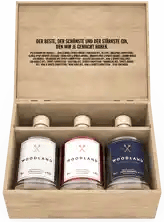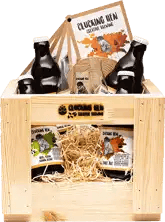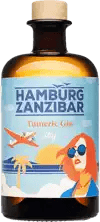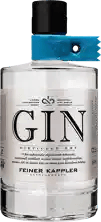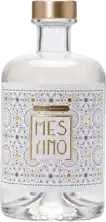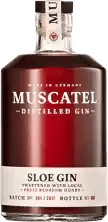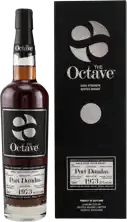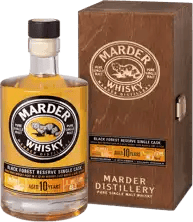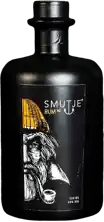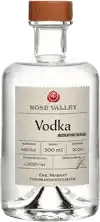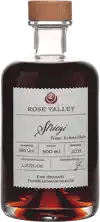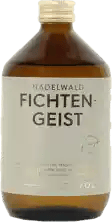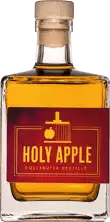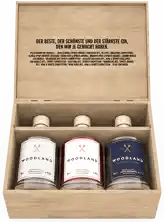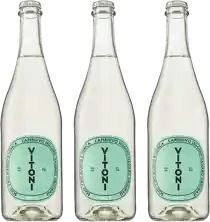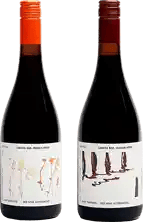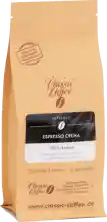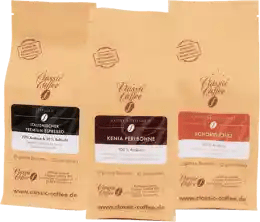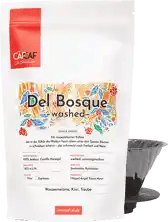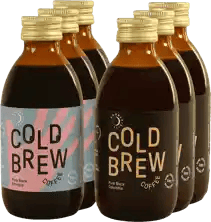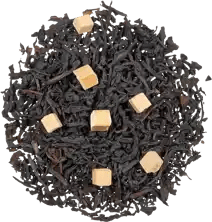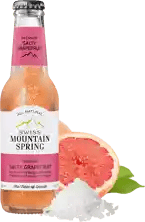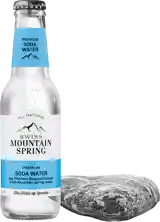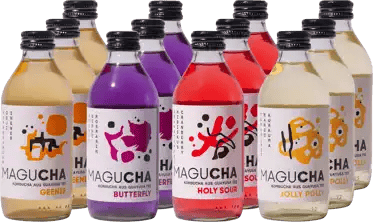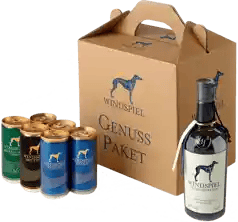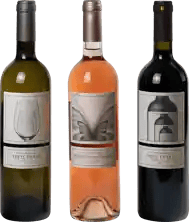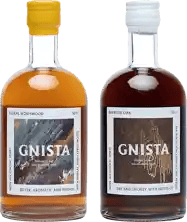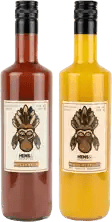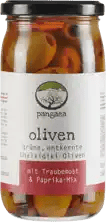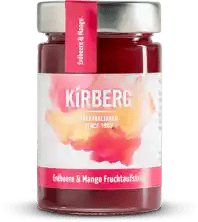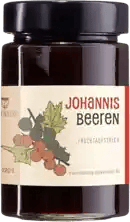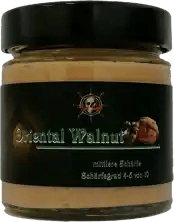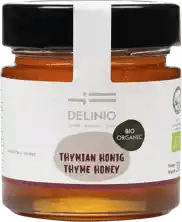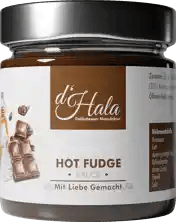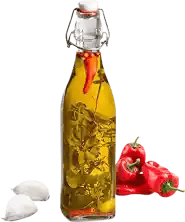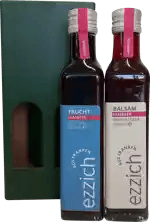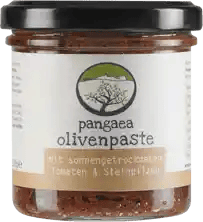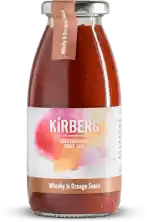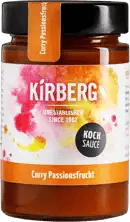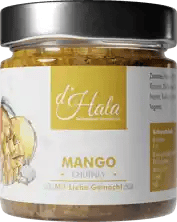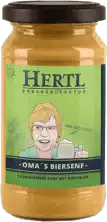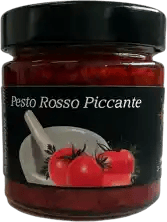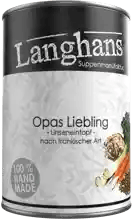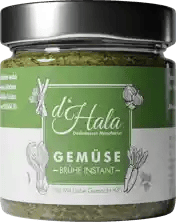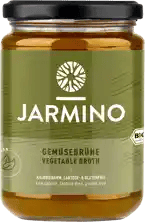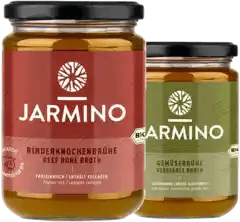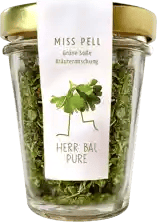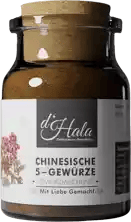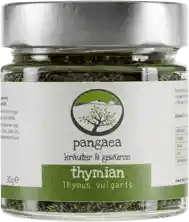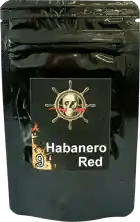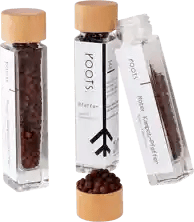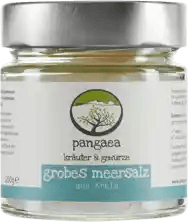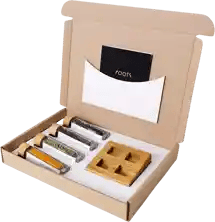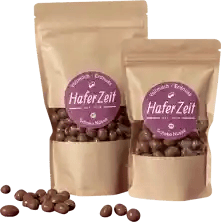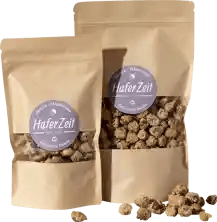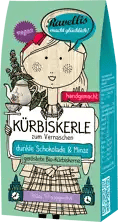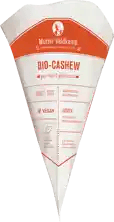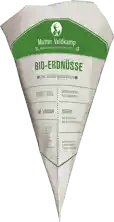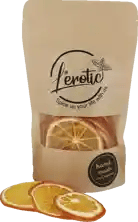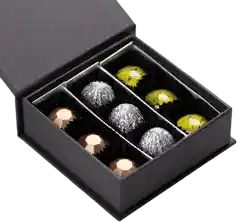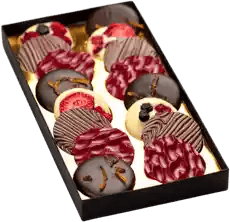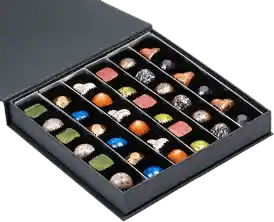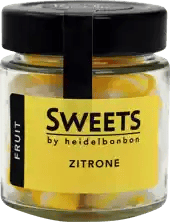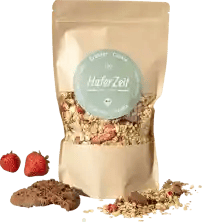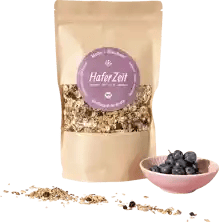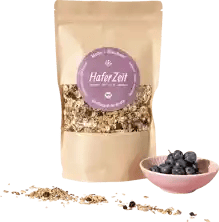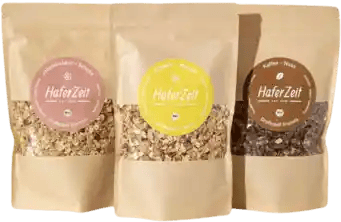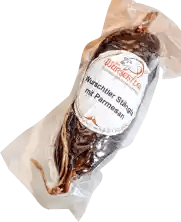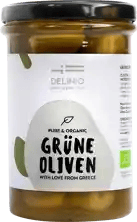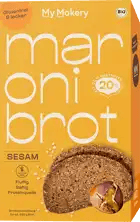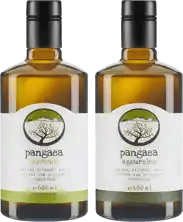Quality instead of quantity!
7,000 independent products
No mainstream
7,000 independent products
Coffee: pick-me-up, cake companion and quite simply one of the most popular drinks in the world. And yet there is still something exotic and mythical about coffee - especially when we familiarize ourselves with the coffee rituals in other countries. It is drunk "ristretto", as a small brown or large black, in a glass or in a cup, with Turkish lokum or Danish pastries. Many of us can't even start the day without the brew. But what actually makes coffee so special? In this article, you'll find out everything you need to know about coffee. So we recommend: sit back and enjoy!
Coffee guide
Every coffee fan knows that the best Arabica and Robusta varieties come from Brazil, Colombia, Ethiopia, Indonesia and Guatemala. However, the beverage is mainly consumed in Europe, with countries such as Finland, Norway, the Netherlands, Serbia and Austria leading the way in this area. For many people, coffee is part of their daily ritual: a cup at breakfast awakens the spirits, while in the afternoon a cappuccino goes well with a delicious pastry.
Coffee became very popular during the industrial revolution, when it became a "lubricant". However, mankind was not always as well-disposed towards the drink as it is today. As late as the 18th century, it was believed that drinking coffee would lead to premature death. And although there are still numerous opponents of coffee today, the positive properties of the drink can no longer be denied. Moderate coffee consumption is associated with a lower risk of cardiovascular disease, strokes and liver cancer.
Today, we can choose from a variety of specialty coffees and coffee beans. We also have a wealth of different tools at our disposal to prepare our favorite drink - from the Cezve to the fully automatic coffee machine. It has also become much easier to buy high-quality coffees online.
Contents
- Coffee: history and origin
- Coffee plants: varieties and differences
- Cultivation and processing
- Preparation methods
- Coffee specialties
- Cocktails with coffee
- Buying coffee
- Coffee certificates
- Coffee fun facts
Coffee: history and origin
There are numerous legends surrounding the origins of coffee. According to one tradition, the Islamic prophet Mohammed discovered the drink and its refreshing effect when the angel Gabriel served him a cup of coffee. However, it is more likely that the coffee originated in the former kingdom of Kaffa, which is now part of Ethiopia. Be that as it may, here we look at the origins of coffee.
Where does coffee come from?
If we look further into the origin story of coffee from the Kingdom of Kaffa, we come across the following information: A shepherd is said to have noticed that his goats were jumping around happily after eating the red berries from a particular bush. When the shepherd tried the berries himself, he noticed the same invigorating effect.
Some sources claim that the shepherd spat the berries into the fire in disgust and thus invented the roasting of coffee beans. From Ethiopia, coffee made its way to the Arabian Peninsula and on to Europe. The Yemeni port city of Mokka, now al-Mukha, was an important trading center for coffee.
Who invented coffee?
Coffee as we know it today largely originated in France, Italy and England. The siege of the city of Vienna by the Ottomans played a key role in the spread of coffee. It was they who brought the aromatic beans to Austria - and thus gave the impetus for the Viennese coffee house culture. We owe many of the coffee specialties that we take for granted today to the Viennese coffee houses.
Coffee plants: varieties and differences
When we talk about coffee varieties, we usually mean Arabica and Robusta. These two varieties make up 99% of global production, with Arabica accounting for around two thirds and Robusta for one third. The rest is made up of lesser-known varieties, which we would also like to introduce to you here.
Arabica
Arabica coffee is also known as mountain or Java coffee. It is by far the most commonly grown type of coffee. Arabica grows best in the highlands, ideally at an altitude of over 1,000 meters. The higher the Arabica is grown, the longer it matures - and the higher its quality. The caffeine content of Arabica coffee is between 0.8 and 1.4%, the oil content between 15 and 17%. Coffee made from Arabica beans has a slightly fruity and balanced taste.
Robusta (canephora)
In contrast to Arabica, Robusta is a lowland coffee. Botanically, it is known as Coffea canephora. Robusta is - as its name suggests - robust and only susceptible to heat to a limited extent. It matures in just six months, which makes several harvests per year possible. The aroma of Robusta is strong and has earthy to woody notes. With a caffeine content of 2 to 4 %, Robusta is twice as strong as Arabica. It is mainly used for espresso blends.
Liberica (excelsa)
Liberica originally comes from the lowlands of West Africa, but is now also grown in South East Asia. It is of minor economic importance and has the longest ripening process at 12 to 14 months. Of all coffee varieties, Liberica has the highest sugar content.
A sub-variety of Liberica is Excelsa. This variety was discovered in 1904 in the area around Lake Chad and is considered a bean rarity. The Excelsa also thrives on very dry soils and is extremely hardy. However, the aroma of this coffee takes some getting used to and is very earthy.
Maragogype
Maragogype is another rare coffee variety. Gourmets appreciate it for its mild taste and low acidity. The Maragogype bean is a cross between the Arabica and Liberica bean. The bean was named after the Brazilian port city of Maragogype, from which it originates.
Its size is striking: the Maragogype bean is around a third larger than the Arabica bean, which has earned it the nickname elephant bean. The aroma of Maragogype coffee is extremely mild and the roast is rather light compared to other varieties. It is particularly suitable for preparation in a French press or with a hand filter.
Stenophylla
Stenophylla originates from the lowlands of West Africa. It was discovered towards the end of the 19th century and cultivated in large quantities until it was replaced by Arabica. This is mainly due to the fact that the fruits of the Stenophylla plant ripen very slowly. However, this coffee variety has not disappeared completely. It is still cultivated in countries such as Sierra Leone, Guinea and Nigeria.
Cultivation and processing
Specific cultivation conditions apply to each type of coffee. There are also differences in processing. The first step to the roasted (and ground) end product is the harvest. The coffee bean is the seed of the coffee cherry, which is harvested from September to December in growing regions north of the equator and from April to August south of the equator.
There are already considerable differences in the harvesting process: when picking, the ripe cherries are picked individually by experienced pickers. Stripping is also done by hand, but unripe cherries are also removed from the trees. Finally, the coffee cherries can also be harvested by machine, but this is associated with a lower quality.
Growing region
The ten most important coffee-growing regions in the world include the following countries: Brazil, Ethiopia, Guatemala, Honduras, Colombia, Indonesia, India, Mexico, Peru and Vietnam.
Cultivation altitude
The cultivation altitude depends on the respective coffee variety. A general distinction is made between lowland and highland coffee. Coffee thrives at an altitude of 600 to 2,000 meters. Robusta plants grow best at altitudes below 900 m, while Arabica plants prefer higher altitudes.
Dry/wet processing (dry/wet processing)
Dry processing is the oldest processing method and requires very little use of machinery. The hand-picked coffee cherries are cleaned and then dried. To ensure that the fruit dries evenly, it is turned using a rake. The process can take up to four weeks. It is important that the coffee does not dry out too much, but excess moisture must also be avoided. Finally, the dried pulp of the coffee cherry is removed from the bean.
Wet processing requires industrial methods and a lot of water. This is certainly not environmentally friendly, but the properties of the coffee bean are better preserved with this processing method. The picked cherries are sorted in huge sieves and then de-stemmed. The skin and pulp are removed, but the parchment shell around the coffee bean remains intact.
The next step is interesting: the remains of the pulp and the mucilage layer must also be removed. To do this, the beans are placed in fermentation tanks where they ferment. The fermentation process causes the pulp residue and mucilage layer to fall off all by itself. Fermentation must be strictly controlled and must not last longer than 36 hours. Finally, the beans are washed and then dried.
The beans can be shelled, sorted and bagged in the country of production or consumption. The dry processing method is used most frequently.
Degree of roasting
Light, medium or dark? 3, 4 or 5? If you also find these designations on coffee packaging confusing, our little roast level guide will help you.
Before roasting, the coffee bean is green. But it is precisely the roasting process that makes coffee edible in the first place. The temperature and duration of roasting determine the roasting profile. This determines which aromas are emphasized and for which preparation method the end product is suitable.
The degree of roasting depends on the temperature and is usually classified as light, medium or dark. These designations correspond to grades 3, 4 and 5. The degree of roast is usually determined on the basis of visual factors. In smaller roasting plants, drum roasting is used, which allows the coffee aromas to develop particularly strongly. However, as the process is time-consuming, hot air roasting is used for mass production.
The light roast contains a lot of fruit acidity, but hardly any roasted aromas. The natural coffee aromas come to the fore. The result is a fruity, flowery coffee with a high caffeine content. Light roasts are ideal for preparation in a Chemex pot or French press.
Compared to the light roast, the medium roast is less acidic and also contains less caffeine. On the other hand, the coffee is slightly bitter and has a rounded body. The medium roast is characterized by the perfect balance between acidity and roasted aromas. Medium roasts are particularly suitable for filter machines.
The dark ro ast contains very little acidity, but all the more bitter substances. The typical roasted aromas such as chocolate, nut or caramel are characteristic. Dark roast can be divided into three different sub-categories: Viennese roast, French roast and Italian roast. Dark roasts are ideal for espresso.
Single origin or blend
For a coffee to be labeled "single origin", it must be made from a single variety of coffee beans. In addition, the beans must come from the same growing region. Single origin coffees are generally roasted less intensely than blends. As it is a luxury product, only the best beans are used for single-origin coffee.
Blend coffee, on the other hand, is a mixture of several green coffees. The proportions of the individual bean varieties are balanced to create the perfect aroma. A comparison with tea is obvious here. Tea - whether black or green - only gets its unique aroma by adding other plants and tea varieties. The situation is similar with coffee.
Grinding degree
The grind of coffee ranges from 1 (very fine) to 10 (very coarse). Very finely ground coffee releases its aromas extremely quickly when it comes into contact with hot water, as it offers the water a larger surface area. This makes the coffee bitter and strong very quickly. However, if the grind is very coarse, the result is a bland, watery drink.
Of course, the degree of grinding plays a role when buying coffee. The decisive factor is the method of preparation. For the espresso machine, use finely ground espresso, a medium grind is perfect for filter machines and coarsely ground coffee goes into the French press. If you opt for bean coffee, you can adjust the grind to your liking using a coffee grinder at home.
The different ways of making coffee
There are many different ways to prepare coffee. Here we present the most common methods - as well as a few more exotic ones.
Coffee machine
From DeLonghi to Lavazza: the coffee machine is Italian - and that's that! However, if you look back in history, this is not quite the case. We have an Englishman called Benjamin Thompson to thank for the first inventions in the field of coffee machines. Later, it was a Monsieur Laurens who perfected the invention in his Parisian workshop.
The first fully automatic coffee machine as we know it today was developed by the German inventor Otto Bengtson in the 1960s. With a fully automatic coffee machine, you can also prepare specialties such as espresso, cappuccino or latte macchiato at home at the touch of a button.
Filter machine - The filter machine is the classic among coffee machines and is currently celebrating a comeback. It can be used to prepare aromatic filter coffee. It is worth mentioning that the filter machine also has German origins. The Wigomat, patented in 1954, is considered the prototype.
Espresso maker - The espresso maker is often referred to as an espresso pot or simply as a moka. This is an Italian invention: The first moka pot was made by Alfonso Bialetti. With the espresso pot, you can easily prepare coffee on a stove. However, the name is misleading: no espresso is prepared at all, as the pot cannot generate the necessary pressure and therefore does not produce the crema typical of espresso. However, the coffee from the espresso maker still tastes excellent.
Capsule machine - Capsule machines are a relatively new invention. Instead of filling the machine with beans or ground coffee, you simply insert a capsule. Many manufacturers rely on the lock-in effect: matching capsules must be purchased for a particular machine. The market has loosened up in recent years. You can now buy capsules that are compatible with many different capsule machines. The main criticism is the environmental impact of the caps ules and the fact that you have no say in the preparation of the coffee.
Hand filter - The hand filter method is one of the older methods of coffee preparation. It is extremely practical and produces a great coffee with a strong aroma. It is best if you use soft water and freshly ground coffee for preparation. Once you have decided on this method, you will definitely need a water filter and a coffee grinder. Make sure you follow the exact quantity instructions.
The most important accessories are, of course, hand filters and filter paper. Hand filters are made of porcelain or plastic. Paper filters are available in several sizes - make sure you choose the right one. First, weigh out the coffee and grind it with a coffee grinder. Boil the water and let it cool down a little. Place the paper filter in the hand filter, which you place over a container. Pour in the water to rinse the filter. Then pour the coffee into the filter and slowly pour in the water.
Cold brew - cold coffee - what's so special about it? Cold brew is much more than just cold coffee, because cold water is used right from the start. This contradicts the conventional method of preparation, which uses hot water to extract as many aromatic substances from the coffee as quickly as possible.
To prepare cold brew, coarsely ground coffee is mixed with cold water and left to stand for several hours. In this way, 90% of the aromatic substances and only very few bitter substances are extracted from the coffee. Cold brew can be easily prepared using a French press.
Aeropress - The Aeropress originates from the United States and is suitable for preparing various coffee specialties, including espresso. One plus point is that, apart from the appliance itself, you only need water, coffee and a filter. Unlike the Frech Press, the Aeropress leaves no residue in the coffee.
Cezve - Turkish coffee would be completely unthinkable without the Cezve. Turkish coffee is also known as mocha. It is poured unfiltered. The classic cezve pot is made of hammered copper and has a long handle and a wide base, with the container tapering towards the top. When preparing Turkish coffee, it is important to choose a variety with a very fine grind. Turkish coffee is usually drunk heavily sugared and accompanied by sweets or dried fruit.
Chemex - The Chemex carafe has largely fallen into oblivion, but is currently experiencing a comeback among coffee enthusiasts. The design classic was invented by a German who emigrated to the USA. The principle is similar to that of the hand filter, as the Chemex also uses a paper filter.
French press - The French press is a coffee pot with a plunger that presses the coffee grounds downwards. Coffee is poured into the pot and hot water is poured over it. After a waiting time of around three to six minutes, the plunger is pressed down to separate the coffee grounds from the liquid. Its ease of use and the fact that no paper filters are required have made the French press an extremely popular appliance.
Overview of coffee specialties
They come in every conceivable variety, with new ones being invented all the time. Here we present the absolute coffee classics that you absolutely must try.
Espresso
It's elegant and served in a tiny cup: Originating from Milan, espresso lives up to its fashionable homeland. Espresso blends are finely ground and consist of Arabica and Robusta beans. The crema is characteristic of espresso. This hazelnut-brown layer of foam contributes significantly to the aroma of the espresso. In many countries, espresso is served with a glass of water.
Ristretto
Translated from Italian, ristretto means "restricted, limited". This refers to the amount of water used in this variant of espresso. The amount of liquid is 15 to 20 ml. In terms of taste, however, the mini espresso has a lot to offer. It is less bitter than the classic espresso and scores with notes such as caramel and chocolate.
Cappuccino
The cappuccino consists of espresso and frothed milk. The drink is particularly popular in Germany. The original version of the cappuccino is the Kapuziner, a Viennese coffee specialty. The milk foam is dusted with chocolate powder.
Macchiato
In Italy, a macchiato ("the spotted one") is an espresso with a little frothed milk. It should not be confused with a latte macchiato.
Lungo / Americano
Both the lungo and the Americano are variants of espresso. The lungo, the "long one", is prepared with double the amount of water. This is also the case with the Americano, but here ordinary espresso is subsequently topped up with the same amount of water.
Latte macchiato
The "latte macchiato", or "stained milk", consists mainly of milk with a dash of coffee. It is usually served in a tall glass.
Caffè latte / Flat white
The caffè latte is similar to the cappuccino, but consists of three layers: Coffee, milk and milk foam. During preparation, milk is first frothed and poured into a cup. The espresso is then added. It is important that the espresso is at a higher temperature than the milk so that it can settle.
The flat white is a version of the cappuccino, whereby the milk foam has finer pores. In addition, the cap of milk foam is very thin.
Mocha
The mocha should not be confused with the mocha. While the latter is a classic Turkish coffee, the mocha is a trendy drink. It consists of espresso, milk and chocolate syrup.
Romano
Romano is an espresso served with a slice of lemon or lemon peel. The citric acid is said to enhance the taste of the coffee.
Freddo
Freddo, or "cold coffee", is a frothy, stirred espresso. Enriched with ice cubes, it is a real thirst quencher on hot days.
Iced coffee
Iced coffee comes from the United States. It is a cold version of the caffè latte, which is enriched with crushed ice or ice cubes.
Corretto
Corretto is an espresso that is refined with a shot of grappa, sambuca or brandy.
Cocktails with coffee
The combination of coffee and spirits is very popular. Here we present some popular coffee-based cocktails.
Espresso Martini - This cocktail consists of vodka, espresso, coffee liqueur and sugar syrup. Its name is misleading, as the only thing it has in common with the martini is that it is usually served in a martini glass.
Black Russian - The "Black Russian" consists of vodka and coffee liqueur, with 20 ml of coffee liqueur per 50 ml of vodka.
Café Royale - Coffee and cognac are the ingredients of this cocktail, which is served hot.
Irish Coffee - Irish coffee enjoys cult status in its native Ireland. It is a so-called hot drink made from whiskey and coffee with whipped cream.
Buy coffee
Most supermarkets stock a limited range of coffee. It is usually ground or instant coffee, beans are rarely found. The limited selection of coffee varieties is particularly noticeable in rural areas. On the one hand, coffee has always been considered a city drink - just think of the Viennese coffee houses! -On the other hand, there are hardly any or very few coffee bars in rural areas that sell fine and rare beans. However, this does not mean that you have to do without exclusive coffee: You can buy coffee online and have it delivered directly to your home.
Buying coffee online - the advantages
If you want to order coffee online, you can expect a huge range. Online stores that specialize in coffee usually stock numerous high-quality coffee varieties as well as a certain number of rare beans. Depending on the type of coffee you want to make, you can choose the right variety. You will also find the necessary coffee accessories. You can also order coffee tasting packs where you can try out different coffees.
Coffee certificates
Here we explain which coffee certifications there are and what they mean.
Fair Trade - Coffee that bears the Fair Trade seal has been grown and traded fairly. This means that working conditions are monitored and a fair price is paid for the raw product.
Rainforest Alliance - This seal indicates that the coffee comes from environmentally friendly and socially responsible cultivation.
UTZ - If coffee bears the UTZ seal, it comes from sustainable cultivation. UTZ is committed to a better future for coffee farmers.
organic - Coffee with the organic seal comes from organic cultivation.
Fun facts about coffee
The most exclusive coffee in the world - Kopi Luwak from Indonesia is the most expensive coffee in the world. However, its production method may sound strange to many: The beans are taken from the excrement of the spotted musang. This animal, which belongs to the genus of the crawling cat, eats coffee cherries, digesting only the pulp and excreting the bean.
Coffee as a raw material - After crude oil, coffee is the most important raw material. The world's largest coffee producer is Brazil.
Bulletproof coffee - Bulletproof coffee is coffee that has been enriched with butter or oil.
What is it about goats and coffee? - Coffee is said to have been discovered by a shepherd in Ethiopia whose goats suddenly became very lively after eating coffee cherries.
Can you eat coffee? - Coffee beans can also be eaten on their own, but they must be roasted.
Are there espresso beans? - There are no special espresso plants. In order to be able to prepare espresso from the beans later, the cherries must be dark roasted.
What is Gahwa? - Gahwa originates from the Arab world. Unlike other specialty coffees, gahwa is golden in color and almost clear. The drink is spiced with cardamom, saffron, nutmeg, cloves and rose water and is served unsweetened.
Have you got a craving for coffee? Then take a look around our online store! Our specialty roasters deliver high-quality, exclusive coffee directly to your doorstep. There's no fresher way to order coffee.
Frequently asked questions about coffee:
How much caffeine does coffee contain?
The caffeine content depends on the type of coffee. On average, 100 g of coffee contains 40 mg of caffeine.
How is coffee decaffeinated?
The caffeine is removed from the coffee using water, liquid carbon dioxide or solvents.
How long does the effect of coffee last?
The caffeine reaches the bloodstream 10 to 40 minutes after ingestion. The body has broken down the caffeine again in around five hours.
What is the shelf life of coffee?
Ground coffee should be consumed within two weeks of opening the packaging, beans have a shelf life of eight weeks.
Brilliant!
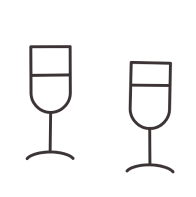
Bitte bestätige deine Anmeldung noch eben - du hast eine Bestätigungsmail von uns. Klicke darin auf den Link. Danach bekommst du deinen Rabattgutschein.


